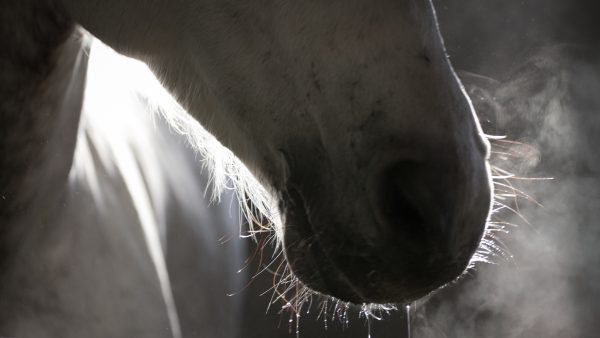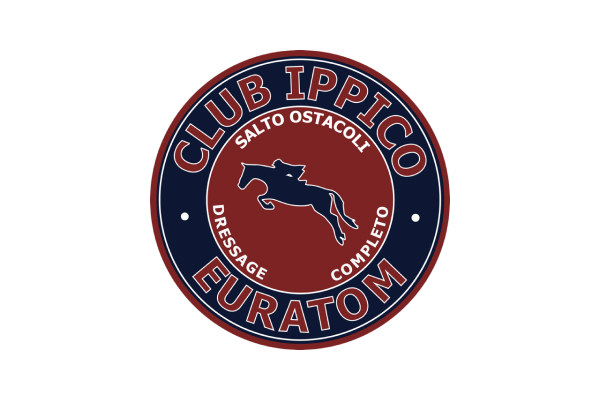
The Horse’s Immune System and Its Alterations: Focus on Autoimmune Diseases

Allies and Enemies: The Paradox of the Immune System
Like all living beings, horses possess a sophisticated defense mechanism: the Horse’s Immune System, which is designed to protect the body from external threats. Every day, cells and molecules work in harmony to identify and neutralize what is foreign, maintaining a balance between defense and tolerance.
However, sometimes this balance is disrupted. The Horse’s Immune System can no longer accurately distinguish self from non-self and begins to target the body’s own tissues.
This is how autoimmune diseases can develop: conditions in which the body attacks itself.
These are often complex disorders, with non-specific symptoms that may involve multiple organs or systems. Their detection requires attention, specialized knowledge, and appropriate diagnostic tools.
Even if not always easy to identify, a deeper understanding of these conditions allows for a more targeted clinical approach—improving the quality of life for affected horses and supporting those who care for them.
A Glimpse of Immunology: Who Leads the Orchestra
In horses, as in all living beings, the immune system is a sophisticated, ever-alert network. It operates on two distinct but complementary fronts: the innate response—fast and broad, ready to act immediately against any threat—and the acquired response—slower but highly precise, able to remember its target over time.
First on the scene are neutrophils and macrophages: they patrol the body, identify invaders, and eliminate them. When the alarm persists, the more advanced immune response kicks in. B lymphocytes begin producing antibodies—immunoglobulins—highly specialized proteins that recognize and neutralize pathogens with great accuracy. At the helm are T lymphocytes, true regulators of immune balance: they activate, amplify, or suppress the response depending on the threat and the context.
This system works brilliantly—until it fails to distinguish between self and non-self. When that boundary blurs, healthy tissues become targets: this is where autoimmunity begins, and the body starts fighting itself.
When the System Goes Haywire: Hypersensitivity and Autoimmunity
The immune system is an extraordinary machine, finely tuned to distinguish friend from foe. But sometimes, this precision fails.
Autoimmunity stems from a loss of tolerance—an internal confusion that leads the body to attack itself. The causes are often multifactorial: infections, recent vaccinations, or a genetic predisposition that increases susceptibility to such “mistakes.”
As a result, autoantibodies and immune complexes form and begin damaging healthy tissues and organs, triggering reactions that vary in intensity and duration.
Some responses are immediate—such as exaggerated allergic reactions to common allergens. Others are antibody- or cell-mediated and develop more slowly, in deeper, systemic ways.
The consequences can range from simple skin irritation to chronic, debilitating systemic illness. Understanding these mechanisms is the first step in recognizing and addressing them early.
Immune-Mediated Skin Disorders: The Skin as a Mirror of Inflammation
The horse’s skin is more than a protective layer—it’s a true reflection of overall health and often the first place where inflammation becomes visible.
Skin allergies are among the most frequent manifestations. They present with persistent itching, localized swelling, hairless patches, crusts, and redness. Sometimes they follow seasonal patterns, other times they’re triggered by environment, insects, or diet.
Thanks to modern testing, it’s now possible to identify specific allergens and begin desensitization therapies that help the horse better tolerate the triggers.
But there are also rarer, more severe forms, such as pemphigus foliaceus, in which the immune system directly attacks the connections between skin cells. The result: deep lesions, thick crusts, erosions that spread quickly and cause pain.
In these cases, the skin tells a story of an internal battle—a defense system that has lost its way.
Autoimmune Blood Disorders: The Blood Under Attack
In certain autoimmune conditions, the immune system targets key blood components such as red blood cells and platelets, impairing hematologic function.
This can lead to hemolytic anemia or bleeding disorders, with symptoms including nosebleeds, petechiae, weakness, and pale mucous membranes.
In newborn foals, a particularly acute form is neonatal isoerythrolysis, caused by maternal antibodies in the colostrum that destroy the foal’s red blood cells when there’s immunological incompatibility.
These conditions demand quick, accurate diagnoses—often through specific blood tests—and timely intervention to prevent serious or fatal complications.
Gastrointestinal Tract: A Delicate Balance
In horses, the gut is far more than a digestive organ: it’s a complex world where nutrient absorption, microbial flora, and immune responses coexist in delicate balance. When this balance is disrupted—often by immune-mediated alterations—chronic enteritis can develop. The intestine becomes persistently inflamed, compromising nutrient absorption.
Symptoms are subtle: intermittent diarrhea, recurring colic, unexplained weight loss, low albumin levels. These signs are easily mistaken for dietary issues or parasitic infections. Accurate diagnosis requires thorough investigations, often including intestinal biopsies—not always feasible in the field.
It’s a diagnostic challenge that demands clinical acumen, patience, and the ability to notice what isn’t immediately visible: the thin thread holding digestive health in place.
Muscles and Blood Vessels: Unexpected Targets
When the immune system strays from its protective role, it may attack entirely unexpected areas.
In some American breeds, immune-mediated myositis has been observed—a condition in which muscle fibers are attacked as if they were enemies. The result is a rapid, dramatic loss of muscle mass, especially in the hindquarters: the horse appears suddenly emaciated, weak, almost unrecognizable.
Blood vessels can also become targets. Vasculitis—inflammation of vessel walls—can cause edema, skin purpura, tissue necrosis, and in severe cases, even laminitis.
Treatment is delicate and complex: corticosteroids and anti-inflammatories to calm inflammation, sometimes antibiotics and anticoagulants to prevent secondary complications. As with many immune-mediated disorders, timing is crucial: early recognition and prompt action can make a real difference.
Lupus: Systemic Self-Destruction
One of the most complex and insidious autoimmune diseases is systemic lupus erythematosus—a rare but profoundly impactful condition in horses.
Again, the immune system loses the ability to distinguish self from non-self and begins attacking the entire body: skin, kidneys, blood vessels, even the blood itself.
Diagnosis is challenging. Symptoms are vague, intermittent, and easily mistaken for other conditions: purpura, hemolytic anemia, glomerulonephritis, skin lesions that change over time.
It takes a blend of specific testing, clinical observation, and medical intuition to reach a diagnosis. Identifying lupus early can prevent irreversible damage.
It’s a race against time, where knowing your enemy is already half the battle.
Respiratory Tract: The Hidden Allergy
Often underestimated due to its quiet nature and absence of fever, IAD (Inflammatory Airway Disease) is a chronic inflammatory condition of the airways, not caused by infection. The main culprits are environmental: fine dust, mold spores, ammonia, and other irritants found in poorly ventilated stalls.
Affected horses don’t appear overtly ill, but something changes: dry cough, mild nasal discharge, labored breathing during exercise, and most notably, reduced performance—often misattributed to fatigue or poor fitness.
In reality, their immune system is battling a silent inflammation that, if neglected, can worsen over time.
A “hidden allergy,” requiring careful attention, environmental management, and targeted treatments to help the athletic horse breathe again—in every sense.
Nervous System and Ocular Appendages
Not all autoimmune diseases make a dramatic entrance. Some act in the shadows, slowly affecting vital structures like the peripheral nervous system or the visual system.
One of the most severe forms is cauda equina neuritis. It may start with subtle signs—a slight weakness in the hindquarters, pain on palpation, altered gait. Then, gradually, the condition worsens. The horse progressively loses control of its hind limbs, eventually becoming paralyzed.
This rare but devastating condition disrupts daily life and demands careful, compassionate management.
More common—but equally insidious—is recurrent uveitis, also known as “moon blindness.” Its flare-ups come in waves, often without warning: red eyes, tearing, light sensitivity. Each episode leaves invisible scars that may eventually lead to blindness.
In many cases, the trigger is an exaggerated immune response to bacterial antigens—such as those from Leptospira—that the body can no longer tolerate.
There is no definitive cure. But there is hope to slow progression, manage symptoms, and preserve the horse’s quality of life. It takes consistency, long-term treatment, and a sharp eye that can catch even the subtlest signs.
Serum Sickness: When Therapy Becomes a Threat
It may seem ironic, but sometimes a treatment becomes a threat. This is the case with serum sickness: a rare but serious reaction that can occur after administration of hyperimmune sera.
Instead of accepting the external help, the immune system reacts aggressively against the foreign proteins, creating complexes that end up damaging blood vessels, joints, kidneys, and liver.
Warning signs include fever, sudden lameness, skin purpura, and kidney issues such as glomerulonephritis.
Definitive diagnosis requires histological examination, but treatment is only supportive. In these cases, prevention and vigilant monitoring make all the difference.
Toward a Future of Early Diagnosis and Personalized Medicine
Autoimmune diseases in horses represent one of the most fascinating and complex challenges in modern veterinary medicine.
Understanding how the immune system works—and more importantly, learning to recognize warning signs early—can truly make a difference.
Today, we have increasingly precise tools: targeted diagnostic tests, genetic evaluations, and growing awareness of the horse’s environment.
All this paves the way for a more informed, personalized approach—one that can tangibly improve clinical management and, above all, the quality of life for affected horses.
Alessia Niccolucci
© Rights Reserved.




.png)
















